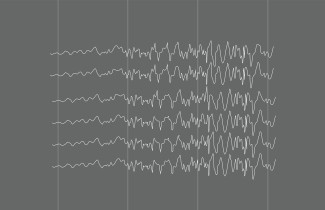Research and clinical work with patients generate so much imaging data that their efficient use is impossible without image analysis methods that are based on artificial intelligence. A new image analysis centre to be set up in Kuopio will provide support for patient care as well as for companies and research groups whose work involves imaging.
“For instance, Kuopio is home to a considerable amount of research that is linked to brain imaging in one way or another. In Finland, experimental magnetic imaging is almost entirely concentrated in Kuopio,” Professor Jussi Tohka says.
Tohka started as Professor of Biomedical Image and Signal Analysis at the University of Eastern Finland at the beginning of this year. For a few years now, he has been the leader of a research group at A.I. Virtanen Institute for Molecular Sciences, which develops methods especially for automated analysis of brain images. Machine learning based image analysis methods aim, for example, to predict the individual progression of memory disorders, and to identify patients who, based on brain images, would benefit most from different interventions.
Machine learning is an area of artificial intelligence. In this context, it means that a computer program is given as material to learn from brain images from a large group of patients, and data on their disease progression over the years. Based on these, it will build a mathematical model which makes it possible to use any individual patient’s brain images to make a prognosis for the upcoming few years.
“Machine learning algorithms aim to make individual patient-specific forecasts, unlike traditional statistical analyses that look for differences between groups. The various benefits of these different methods may not yet be fully internalised in the field of medical research,” Professor Tohka points out.
He is currently leading a project whose main objective is to raise awareness of the new opportunities provided by AI based image analysis. Carried out in 2019–2021, key target groups of the project Enhancing the Innovation Potential by Advancing the Knowhow on Biomedical Image Analysis – Kuopio Biomedical Image Analysis Centre (KUBIAC) include, e.g., hospital physicists, radiologists, researchers and drug developers in companies, who use image analysis in their work. The project also trains new image analysis developers.
“The project focuses on training and competence development. However, after the project is finished, the KUBIAC Centre also aims to provide image analysis services. Another aim is to promote collaboration between researchers and companies, and to promote business activities that are based in image analysis. At the moment, there are only a handful of companies offering biomedical image analysis in Finland.”
According to Tohka, there is a demand for implementing image analysis skills in Kuopio, for example within the extensive research community in neurosciences.
“Research generates abundant sets of brain images that can be utilised efficiently by automated analysis methods. In the future, the regional data pool will also provide researchers with plenty of imaging data generated in the course of routine clinical work.”
Machine learning is based on learning algorithms. In other words, they will not outsmart their teacher.
Jussi Tohka
Professor
Machine learning makes the field’s best knowledge available to all
The KUBIAC project is funded by the European Social Fund, Kuopio University Hospital, and companies.
“With Kuopio University Hospital’s imaging centre, we have a pilot project where machine learning is applied to image analysis of brain aneurysms. The long-term objective is to make more information from blood vessel MRI available to physicians.”
“Machine learning is based on learning algorithms. In other words, they will not outsmart their teacher and they will not replace top experts in the application of image analysis,” Professor Tohka says.
“However, they can quickly extract relevant information from images that would take a very long time from a radiologist to do. They also serve data transfer, because when algorithms are taught the best knowledge in the field, that knowledge will benefit all users.”
AI based image analysis appears to become more and more common in the field of radiology.
“The number of radiological AI applications approved by the US Food and Drug Administration, FDA, can be used as one indicator. I haven’t found a similar list from Europe, but there were 80 applications approved in the US at the beginning of this year, compared to only about 40 at the beginning of 2020. Of course, most of them are still based on fairly simple artificial intelligence,” Professor Tohka says.
His research group actively disseminates the methods they have developed for wider use.
“Neuroscientific research is very collaborative, and our own work relies on freely accessible, extensive sets of data in the field where these methods can be developed and applied. The use of artificial intelligence in the context of research into Alzheimer's disease has been promoted, for example, by the Alzheimer's Disease Neuroimaging Initiative launched in the US already in 2004.”
“As partners, we have a large number of brain researchers who are interested in using our methods in their own data. In turn, they provide us with the medical understanding needed for image analysis. Continuous interaction with experts from many different sectors is indeed a necessity in this work, and also what makes it great.”
For example, Professor Tohka is currently collaborating with the Reina Sofia Alzheimer research centre in Madrid to make use of machine learning in the identification of signs of very early memory problems from brain images.
“The brain begins to change well before symptoms appear, and we are now starting to have sufficiently long-term follow-up data to examine these changes in healthy people at baseline.”
However, he notes that his development of methods is targeted more at the first steps of the chain of examinations than actual clinical work with patients.
“Kuopio provides a unique environment especially for the analysis of preclinical sets of images, as almost all experimental MRI in animals in Finland is concentrated here. Recently, we have published various solutions for preclinical image analysis that are based on neural networks.”
Jussi Tohka
- Professor of Biomedical Image and Signal Analysis, University of Eastern Finland, 1 January 2021 -
- MSc (mathematics), University of Turku, 1999
- PhD (signal processing), Tampere University of Technology, 2003
- Docent (pattern recognition and image analysis in brain imaging), Tampere University of Technology
Key roles
- Associate Professor (Tenure track), University of Eastern Finland, 2015–2020
- CONEX Marie Curie Professor, Universidad Carlos III de Madrid (Spain), 2015–2016
- Senior Researcher, Academy Research Fellow and University Researcher roles, Tampere University of Technology 2005–2015
- Post doc researcher, UCLA (US), 2004–2005




